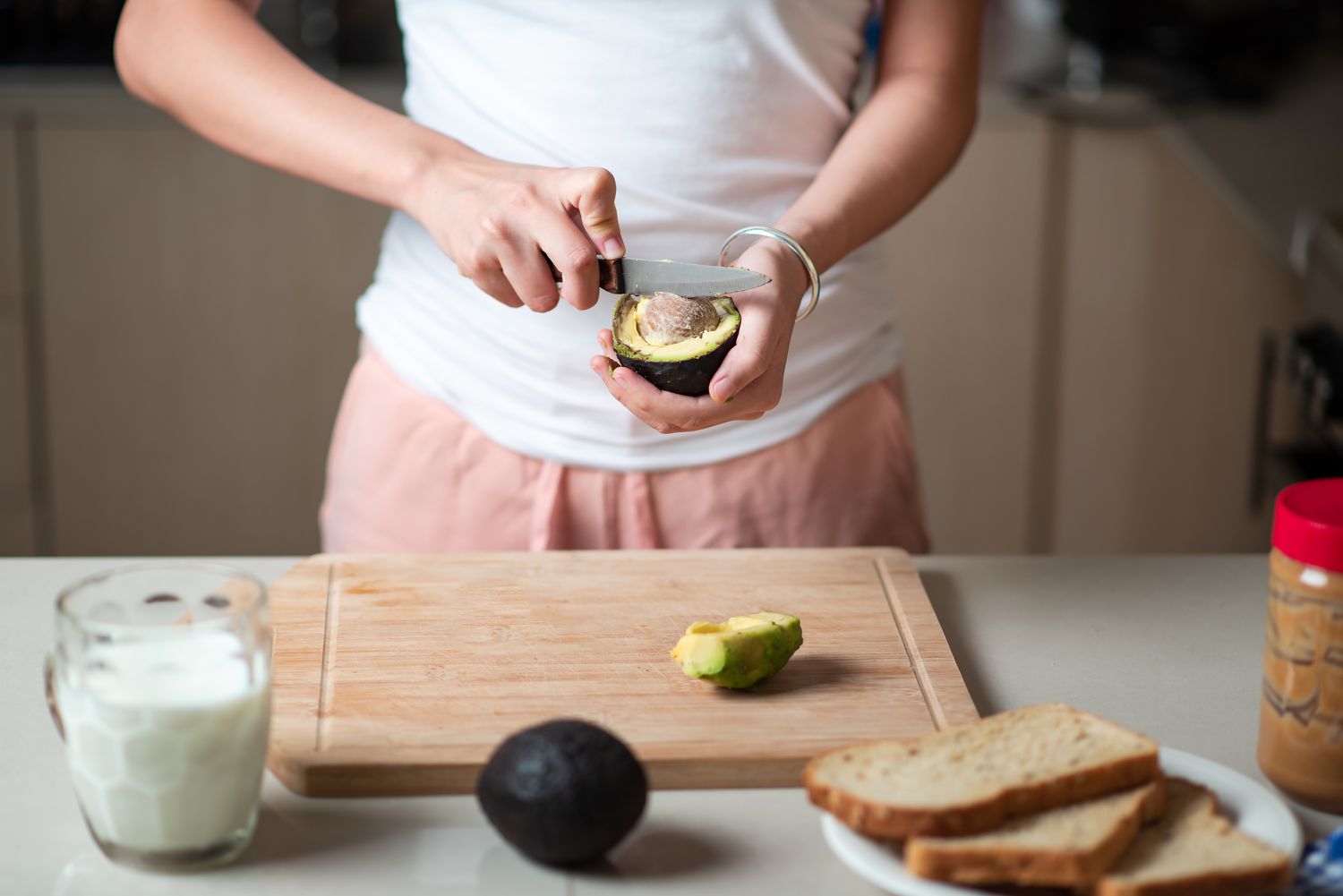What is "Avocado Hand"? Experts Explain This Common Kitchen Knife Injury

Avocados have become a staple in many people’s kitchens, but slicing up the fruit could be riskier than you might think—“avocado hand” injuries are fairly common, emergency room doctors warned.
“I cringe every time I hear about avocados and knives,” Ali Jamehdor, DO, emergency medicine physician and medical director of the Weingart Foundation Emergency Department at Providence Saint John’s Health Center, told Health. “We see several types of injuries related to this.”
In fact, avocados are linked to thousands of medical emergencies each year. Between 2013 and 2017, one study counted over 27,000 knife injuries related to people cutting avocados in the U.S. Most of these emergency room visits happened between April and July.
Demand for the fruit is only increasing, making it likely that you or someone you love is a regular enjoyer of avocados. So how can you avoid an avocado hand injury in the kitchen?
Here’s what experts had to say about why the injury can happen and how to cut into avocados safely.
“Avocado hand” isn’t a traditional medical term, but it’s become a common way to describe knife injuries that can happen while someone is cutting an avocado.
The actual injury itself depends on “how people hold the avocado when they’re cutting,” Jamehdor explained. But in most cases, these are stabbing injuries to a person’s non-dominant hand—as in, a person accidentally stabs themselves while trying to cut the fruit, he said.
“People have also sliced off the tips of their fingers, although you can also see deeper lacerations,” said Jamehdor. “Mostly, injuries happen when people are trying to get the pit out.”
Depending on where the cut is and how deep it is, avocado hand injuries can be serious.
“Laceration of the skin would likely be considered a minor, or at least straightforward, injury,” Mark Conroy, MD, associate professor of emergency medicine at The Ohio State University Wexner Medical Center, told Health. “From there, these lacerations can be more severe if they involve tendons involved with hand and finger movements, nerves, or even blood vessels.”
There’s also a risk of infection or scarring if these injuries are not treated properly, he added.
It’s not totally clear just how common avocado hand injuries really are. They’re not the main cause of knife-related injuries in the U.S., but they do happen often enough, Conroy said.
One 2020 study analyzed data from Americans with knife injuries who went to the emergency room between 2000 and 2017, and found that avocados were linked to 2% of all of these injuries. Another study found there were an estimated 50,413 avocado-related injuries between 1998 and 2017.
But this research is likely missing a number of avocado hand cases, Conroy explained.
“This percentage is likely an underestimate of actual injuries, as the number is generated from individuals only presenting to the emergency department,” he said. “Anyone not pursuing a higher level of care for their injury would not be counted.”
Knife injuries can happen to anyone, but the data show that avocado hand injuries happen most frequently in women ages 23 to 39.
Of course, the best way to avoid avocado hand is to cut the fruit correctly.
Before cutting into the avocado, “always wash [it] first in running water to remove any dirt or contaminants,” Debora Miller, PhD, dean of Culinary Arts at Keiser University Tallahassee, told Health.
Then, cutting away from your body, use a sharp knife to cut the avocado lengthwise around the seed, slicing through the skin and fruit, she said.
“Twist the halves apart and then remove the seed by cutting around it,” Miller recommended, and then use a spoon to scoop out the avocado pit.
“Peel the skin away and then slice, chop, or mash the avocado,” she said.
It’s also crucial to do all of this slicing on a cutting board, rather than while you’re holding the avocado in your hand, Conroy said.
This goes for other fruits and vegetables you may be slicing, too.
“Cutting any kind of melons or mangoes can be an issue,” Jamehdor warned.
One way to lessen the possibility of injuries is to use a proper knife: “Overloading a knife beyond its capacity can cause it to slip easily, leading to accidents,” said Miller.
When it comes to slicing avocados and other produce, it’s all about being aware that a knife injury is possible—and cutting with care and caution, Jamehdor recommended.
“Avoiding a strong stabbing motion is important,” he said.




